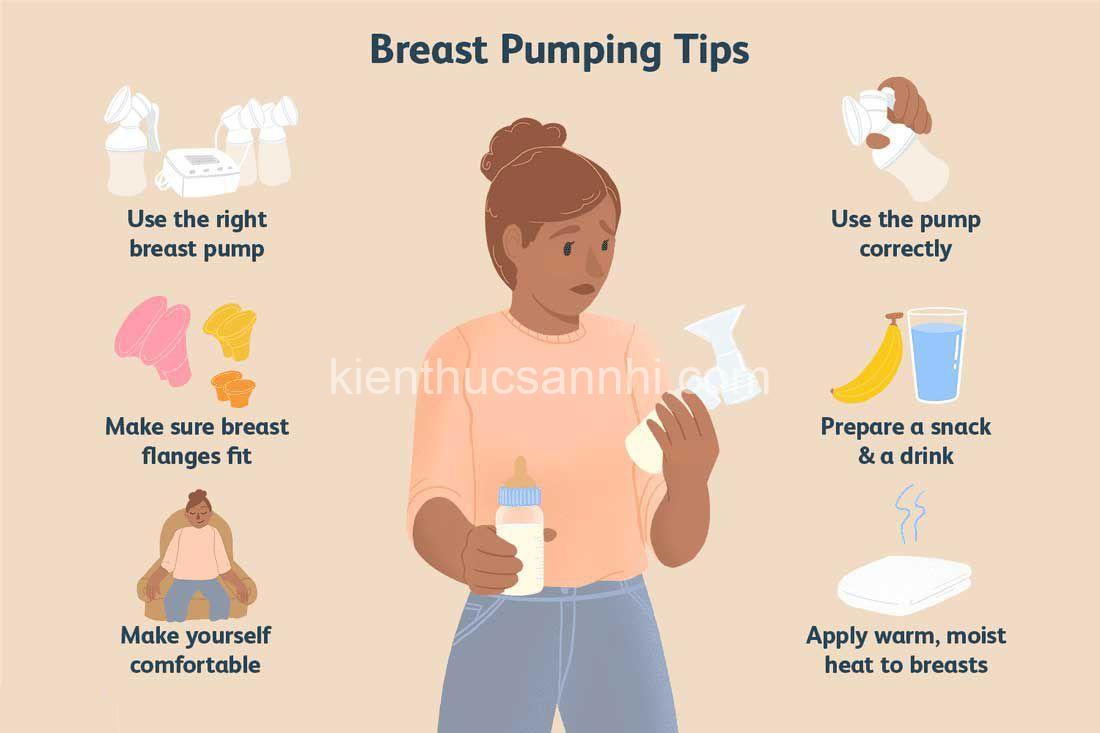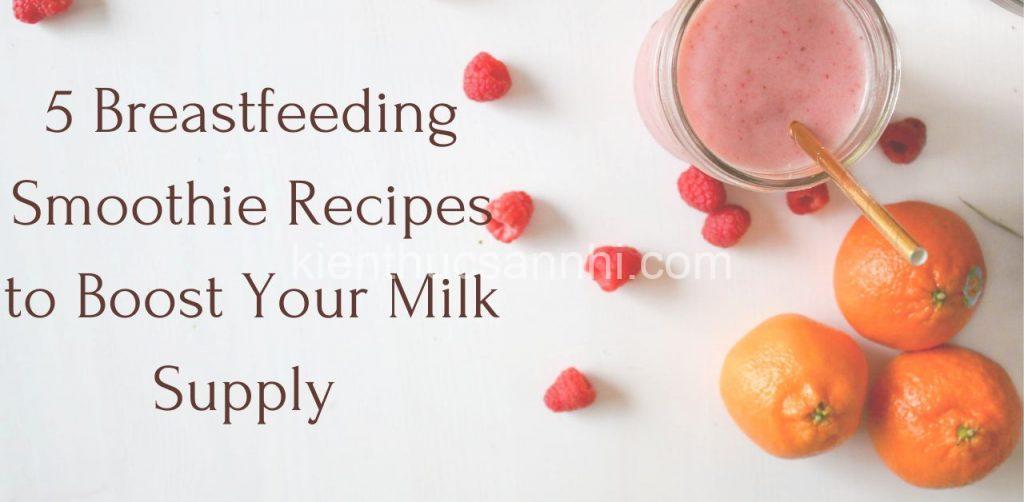
Increase Milk Supply: Nursing, Pumping, Diet & More | kienthucsannhi.com. In today’s article, kienthucsannhi.com will explore with you in the most detailed and complete way. See now!
Understanding Milk Supply and Production
Breastfeeding is a beautiful and natural process, but sometimes mothers struggle with producing enough milk for their babies. This is where understanding the basics of milk supply and production comes in. The “supply and demand” principle is the cornerstone of breastfeeding. The more frequently and effectively your baby nurses, the more milk your body will produce.
The hormones prolactin and oxytocin play a crucial role in milk production. Prolactin is responsible for stimulating milk production, while oxytocin triggers the release of milk from your breasts (also known as the “letdown” reflex). These hormones work in tandem, ensuring your baby receives the nourishment they need.
Many factors can influence milk supply, including:
- Stress: High levels of stress can hinder prolactin production and affect milk supply.
- Sleep: Adequate sleep is essential for hormone regulation, including prolactin production.
- Diet: A balanced diet rich in essential nutrients can support milk production.
- Hydration: Staying hydrated is crucial for milk production, as milk is primarily composed of water.
- Baby’s needs: The more frequently your baby nurses, the more milk your body will produce to meet their demands.

Nursing Techniques for Increased Milk Supply
Proper latch and positioning are essential for efficient milk removal, which in turn stimulates milk production. Here are some tips for ensuring a good latch:
- Position your baby: Make sure your baby is comfortably positioned, with their body close to yours.
- Hold your breast: Gently guide your breast into your baby’s mouth.
- Deep latch: Your baby’s mouth should be wide open, covering not just the nipple but also the areola (the dark area around the nipple).
- Check for discomfort: If you experience pain while nursing, adjust your baby’s position.
Frequent nursing (on demand) is also crucial for stimulating milk production. It’s natural for your baby to nurse frequently, especially in the early days. Don’t be afraid to nurse your baby as often as they need, even if it feels frequent.
Emptying your breasts completely during each feeding is important. When your baby is finished nursing on one breast, offer the other breast. You can also use a breast pump to help empty your breasts, especially if your baby doesn’t fully drain a breast.
The Role of Pumping
Breast pumps can be helpful for increasing milk supply, especially if your baby is having difficulty latching or if you need to supplement with breast milk. There are different types of breast pumps, including:
- Manual pumps: These are hand-operated and may be a good option for infrequent pumping.
- Electric pumps: These are more convenient and efficient, especially for frequent pumping.
- Double electric pumps: These pumps allow you to pump both breasts simultaneously, which can be more efficient for increasing milk supply.
Pumping frequently can stimulate milk production, similar to breastfeeding. Here are some tips for using a pump effectively:
- Find a comfortable position: Find a position where you can relax and focus on pumping.
- Use the correct flange size: The size of the flange (the part that goes over your breast) should be appropriate for your breast size.
- Follow the pump’s instructions: Each pump has its own specific instructions for use.
- Pump for the recommended time: Pumping for too short or too long can affect milk production.
- Combine nursing and pumping: Pumping in addition to nursing can help increase your milk supply.
Nutrition and Hydration for Lactation
A healthy and balanced diet is essential for maintaining your own health and supporting milk production. Focus on consuming plenty of:
- Fruits and vegetables: These provide essential vitamins, minerals, and antioxidants.
- Whole grains: These are a good source of fiber and complex carbohydrates.
- Lean protein: This is important for building and repairing tissues.
- Healthy fats: These are important for brain development in your baby.
Some foods, known as galactagogues, are believed to promote milk production. These include:
- Fenugreek: This herb is often used to increase milk supply.
- Blessed thistle: This herb has been traditionally used to promote lactation.
- Oatmeal: This grain is high in fiber and can help increase milk production.
- Almonds: These nuts are a good source of protein, fiber, and healthy fats.
Staying well-hydrated is crucial for milk production, as milk is primarily composed of water. Aim to drink plenty of water throughout the day, especially when you’re breastfeeding or pumping.
Stress Management and Rest
Stress and lack of sleep can have a significant impact on milk production. Stress can inhibit the production of prolactin, the hormone responsible for stimulating milk production. Lack of sleep can further exacerbate stress, leading to a vicious cycle.
Here are some tips for managing stress and prioritizing rest:
- Relaxation techniques: Practice relaxation techniques such as deep breathing, meditation, or yoga to reduce stress.
- Support system: Lean on your support system for help with household chores, childcare, and emotional support.
- Prioritize sleep: Aim for 7-8 hours of sleep per night.
- Create a supportive environment: Make your breastfeeding environment comfortable and relaxing.
Seeking Support and Resources
It’s important to remember that you’re not alone in this journey. Seek support from healthcare professionals, lactation consultants, or breastfeeding support groups.
- Healthcare provider: Your doctor can help assess your milk supply and address any concerns you may have.
- Lactation consultant: Lactation consultants are experts in breastfeeding and can provide personalized support and guidance.
- Breastfeeding support groups: Support groups provide a safe space to connect with other breastfeeding mothers and share experiences.
Common Misconceptions About Milk Supply
Many misconceptions surround milk supply. One of the most common is the “supply and demand” myth. This myth suggests that if a mother doesn’t nurse frequently enough, her milk supply will decrease. However, the reality is that the “supply and demand” principle works in both directions. If you nurse more frequently, your body will produce more milk, but it also works the other way around. If you nurse less frequently, your body will produce less milk.
It’s also important to remember that most mothers can produce enough milk for their babies with proper support. If you have concerns about your milk supply, consult a healthcare provider or lactation consultant.
Addressing Potential Challenges
Despite your best efforts, you may encounter challenges related to milk supply. Some common challenges include:
- Insufficient milk supply: If you’re concerned about your milk supply, talk to a healthcare provider or lactation consultant.
-
Milk supply issues: There are many reasons why a mother might have milk supply issues. These can include:
- Stress: High levels of stress can impact milk production.
- Hormonal imbalances: Hormonal imbalances can affect milk supply.
- Medications: Some medications can interfere with milk production.
- Medical conditions: Certain medical conditions can affect milk supply.
-
Supplementing: If you’re struggling to produce enough milk, your healthcare provider may recommend supplementing with formula. Supplementing can help ensure your baby receives adequate nutrition while you work on increasing your milk supply.
Conclusion
Remember, breastfeeding is a personal journey, and there is no one-size-fits-all approach. It’s important to stay informed, seek support, and celebrate your breastfeeding successes.
Don’t hesitate to leave a comment below and share your experiences or ask any questions you may have. You can also find more valuable information on breastfeeding and other animal-related topics on my website, kienthucsannhi.com.
FAQs About Increasing Milk Supply
What are some common reasons for low milk supply?
Common reasons for low milk supply include stress, lack of sleep, improper latch, infrequent nursing, hormonal imbalances, certain medications, and underlying medical conditions.
How can I tell if my baby is getting enough milk?
Signs that your baby is getting enough milk include:
- Wet diapers: Your baby should have at least 6-8 wet diapers per day.
- Stool: Your baby should have at least one bowel movement per day.
- Weight gain: Your baby should be gaining weight steadily.
- Contentment: Your baby should be content and satisfied after feedings.
How long does it take to increase milk supply?
Increasing milk supply can take time, typically a few weeks to a few months. It’s important to be patient and consistent with your efforts.
What are some natural remedies for increasing milk supply?
Some natural remedies for increasing milk supply include:
- Fenugreek: This herb is often used to increase milk supply.
- Blessed thistle: This herb has been traditionally used to promote lactation.
- Oatmeal: This grain is high in fiber and can help increase milk production.
- Almonds: These nuts are a good source of protein, fiber, and healthy fats.
Should I be concerned about my milk supply?
If you’re concerned about your milk supply, it’s important to talk to your healthcare provider or a lactation consultant. They can assess your situation, provide guidance, and offer support.
EAVs
- Mother (Entity) – Attribute: Milk supply – Value: Low
- Mother (Entity) – Attribute: Stress level – Value: High
- Mother (Entity) – Attribute: Sleep quality – Value: Poor
- Mother (Entity) – Attribute: Nursing frequency – Value: Insufficient
- Mother (Entity) – Attribute: Latch – Value: Improper
- Baby (Entity) – Attribute: Weight gain – Value: Slow
- Baby (Entity) – Attribute: Wet diapers – Value: Less than 6-8 per day
- Baby (Entity) – Attribute: Stool frequency – Value: Less than 1 per day
- Baby (Entity) – Attribute: Contentment – Value: Unsatisfied
- Pumping (Entity) – Attribute: Frequency – Value: Insufficient
- Galactagogue (Entity) – Attribute: Type – Value: Fenugreek
- Lactation consultant (Entity) – Attribute: Service – Value: Milk supply assessment
- Breast pump (Entity) – Attribute: Type – Value: Electric
- Breastfeeding support group (Entity) – Attribute: Purpose – Value: Emotional support and advice
- Breastfeeding class (Entity) – Attribute: Topic – Value: Milk supply and production
- Milk supply (Entity) – Attribute: Measurement – Value: Ounces per day
- Breastfeeding (Entity) – Attribute: Duration – Value: Minimum 1 year
- Breastfeeding (Entity) – Attribute: Frequency – Value: On demand
- Breastfeeding (Entity) – Attribute: Position – Value: Cradle hold
- Milk supply (Entity) – Attribute: Factors – Value: Stress, nutrition, sleep
EREs
- Mother (Entity) – has (Relation) – Baby (Entity)
- Mother (Entity) – produces (Relation) – Milk supply (Entity)
- Mother (Entity) – consults (Relation) – Lactation consultant (Entity)
- Mother (Entity) – uses (Relation) – Breast pump (Entity)
- Mother (Entity) – follows (Relation) – Diet (Entity)
- Baby (Entity) – receives (Relation) – Milk supply (Entity)
- Baby (Entity) – has (Relation) – Weight gain (Entity)
- Nursing (Entity) – requires (Relation) – Proper latch (Entity)
- Pumping (Entity) – influences (Relation) – Milk supply (Entity)
- Galactagogue (Entity) – increases (Relation) – Milk supply (Entity)
- Breastfeeding support group (Entity) – provides (Relation) – Emotional support (Entity)
- Breastfeeding class (Entity) – teaches (Relation) – Milk supply techniques (Entity)
- Milk supply (Entity) – is measured in (Relation) – Ounces per day (Entity)
- Breastfeeding (Entity) – has a minimum duration of (Relation) – 1 year (Entity)
- Breastfeeding (Entity) – is done (Relation) – On demand (Entity)
- Breastfeeding (Entity) – uses (Relation) – Cradle hold (Entity)
- Milk supply (Entity) – is affected by (Relation) – Stress (Entity)
- Breastfeeding (Entity) – benefits (Relation) – Immune system development (Entity)
- Breastfeeding (Entity) – promotes (Relation) – Bonding (Entity)
- Milk supply (Entity) – aims for (Relation) – Sufficient quantity for baby (Entity)
Semantic Triples
- Mother (Subject) – Produces (Predicate) – Milk supply (Object)
- Mother (Subject) – Consults (Predicate) – Lactation consultant (Object)
- Baby (Subject) – Receives (Predicate) – Milk supply (Object)
- Baby (Subject) – Has (Predicate) – Weight gain (Object)
- Nursing (Subject) – Requires (Predicate) – Proper latch (Object)
- Pumping (Subject) – Influences (Predicate) – Milk supply (Object)
- Galactagogue (Subject) – Increases (Predicate) – Milk supply (Object)
- Breastfeeding support group (Subject) – Provides (Predicate) – Emotional support (Object)
- Breastfeeding class (Subject) – Teaches (Predicate) – Milk supply techniques (Object)
- Milk supply (Subject) – Is measured in (Predicate) – Ounces per day (Object)
- Breastfeeding (Subject) – Has a minimum duration of (Predicate) – 1 year (Object)
- Breastfeeding (Subject) – Is done (Predicate) – On demand (Object)
- Breastfeeding (Subject) – Uses (Predicate) – Cradle hold (Object)
- Milk supply (Subject) – Is affected by (Predicate) – Stress (Object)
- Breastfeeding (Subject) – Benefits (Predicate) – Immune system development (Object)
- Breastfeeding (Subject) – Promotes (Predicate) – Bonding (Object)
- Mother (Subject) – Follows (Predicate) – Diet (Object)
- Mother (Subject) – Uses (Predicate) – Breast pump (Object)
- Mother (Subject) – Has (Predicate) – Low milk supply (Object)
- Milk supply (Subject) – Aims for (Predicate) – Sufficient quantity for baby (Object)





